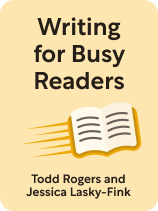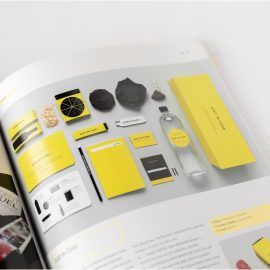

This article is an excerpt from the Shortform book guide to "Writing for Busy Readers" by Todd Rogers and Jessica Lasky-Fink. Shortform has the world's best summaries and analyses of books you should be reading.
Like this article? Sign up for a free trial here.
Do you want to know how to structure a message effectively? How should you organize your ideas?
If you’re writing a message or campaign, it’s important to structure your writing in a way that will get your point across clearly. In their book Writing for Busy Readers, Rogers and Lasky-Fink share three tips for how to do so.
Below, we’ll go over each tip in detail.
Choosing a Writing Structure
Once you have your goal in mind and know how to frame your message so that it resonates with readers, you can write purposefully. But Rogers and Lasky-Fink explain that to achieve your purpose, you must also structure your message in a way that’s easy to follow. A clear structure guides readers through your points logically and helps them retain the most important information. Without a clear writing structure, you risk your big takeaways getting lost or overlooked.
(Shortform note: Which structure you should use is highly context-dependent. For example, journalists commonly use an “inverted pyramid” structure that puts the most important information at the top, followed by supporting details. Workplace communications often use a similar structure, leading with the key message and then offering additional context. For persuasive writing, however, it’s often more effective to build your case gradually, leading readers through background, evidence, and analysis before delivering your conclusion. Chronological structures may work best when storytelling is key, such as in narrative marketing.)
Here are three tips Rogers and Lasky-Fink offer for structuring your message effectively:
Tip #1: Draw attention to the big takeaway. Make sure readers know your main point early on by using visual cues (like bold text) or explicitly stating it at the beginning. For instance, instead of placing the takeaway at the end of your message, lead with it: “The new policy will improve efficiency by 20%.” This is more effective because readers don’t always make it to the end of a piece of content.
(Shortform note: You can also draw attention to your big takeaway in the title of your content. Most pieces of writing have a title or something similar—for example, emails have subject lines and articles have headlines. A clear, attention-grabbing title such as “New Policy Will Increase Efficiency by 20%” ensures that your key message is immediately apparent. This technique helps engage readers from the moment your content enters their awareness.)
Tip #2: Organize your ideas by relevance. Group similar ideas together to create flow and avoid confusion. For example, when writing a report, keep all details about the problem in one section and your proposed solutions in another, rather than mixing them together. This helps readers follow your thought process and see how each piece of information connects to your main point.
Tip #3: Use headings liberally. Headings help readers quickly navigate your writing and find what’s most relevant to them. For instance, if you send out an email that recaps your team’s latest meeting, you might include headings like “Overview,” “Key Decisions,” and “Next Steps” to help readers easily scan the email and focus on the sections that matter most to them.
| How to Organize Your Ideas As you organize your ideas, stick to one idea per paragraph. The first sentence of your paragraph should be a topic sentence—one that clearly expresses the paragraph’s main idea. Each sentence that follows should support, explain, or expand on that main idea. If you find yourself introducing a new idea mid-paragraph, that’s a cue to start a new one. Use a transition at the start of the next paragraph to show how one idea leads to the next. Writing experts say this approach to organizing your ideas not only improves clarity but also makes your writing easier to skim, especially for busy readers. But what if you can’t fully explain an idea in one paragraph? In these cases, dividing your content into sections may be helpful. This is where headings come into play. Headings act like signposts that signal twists or turns in the flow of your writing. They tell the reader what to expect next, which makes it easier for them to follow your logic. Here are three tips for writing effective headings: Aim for clarity: Creative or witty headings are fun, but it’s more important that your reader can quickly understand what each section is about. For example, “Challenges of Remote Work” is more useful than “The New Normal: Work From Home Woes.” Choose action-oriented verbs: Use strong verbs that clearly convey the focus of the section. For example, “Improving Team Collaboration” is more informative than just “Team Collaboration.” Use parallel structure: Keep the format of your headings consistent to show how each section relates to the others. For example, if you’re writing about a step-by-step process, you might use headings like, “Step 1: Action 1” and “Step 2: Action 2.” |

———End of Preview———
Like what you just read? Read the rest of the world's best book summary and analysis of Todd Rogers and Jessica Lasky-Fink's "Writing for Busy Readers" at Shortform.
Here's what you'll find in our full Writing for Busy Readers summary:
- Why some writers are so successful at connecting with readers while others aren't
- How to make your writing more impactful and increase your reach
- That how you communicate can be just as important as what you say






